Importance of Backsplash Tiles in Kitchen Design
Kitchen backsplash tiles serve as both a functional and aesthetic element in kitchen design. They protect walls from spills, stains, and splashes that occur during cooking and cleaning. More importantly, they offer an opportunity to introduce style, color, and texture into the kitchen, acting as a focal point that can elevate the overall design.
Selecting the right backsplash tile is crucial because it needs to complement the kitchen’s cabinetry, countertops, and flooring. It can either blend seamlessly with these elements or stand out as a bold design statement. The wide range of materials, colors, and patterns available means that homeowners can find the perfect tile to match their vision and functional needs.

Backsplash tiles can significantly impact the perceived size and brightness of a kitchen. Lighter colors and reflective materials can make a small kitchen appear larger and more open, while darker, matte finishes can add warmth and coziness to a larger space. The choice of grout color can also affect the overall look, with contrasting grout creating a patterned effect and matching grout providing a more seamless appearance.
In addition to aesthetics, the durability and maintenance of backsplash tiles are important considerations. Kitchens are high-traffic areas prone to grease, moisture, and heat, so choosing materials that are easy to clean and can withstand these conditions is essential. Some materials, like ceramic and porcelain, are particularly well-suited to these environments due to their resilience and low maintenance needs.
Environmental factors are also influencing kitchen backsplash design trends. Homeowners are increasingly opting for eco-friendly materials, such as recycled glass tiles or sustainably sourced natural stone. These choices not only reduce the environmental footprint but also add a unique and often luxurious touch to the kitchen.
The installation process and cost are key factors to consider. Some tile designs and materials are easier to install than others, which can impact the overall budget and timeline of a kitchen renovation. Understanding the complexities of different tile types and their installation requirements can help homeowners make informed decisions and ensure a smooth renovation process.

Popular Backsplash Tile Materials
Ceramic and Porcelain Tiles
Ceramic and porcelain tiles are among the most popular choices for kitchen backsplashes due to their versatility, durability, and affordability. Both materials are made from clay, but porcelain is denser and less porous, making it more resistant to moisture and stains.
One of the biggest advantages of ceramic and porcelain tiles is the wide range of styles and finishes available. They can mimic the look of natural stone, wood, or even metal, providing endless design possibilities. From glossy, smooth finishes to textured, matte surfaces, these tiles can be tailored to fit any kitchen aesthetic.
Ceramic tiles are generally less expensive than porcelain, making them a budget-friendly option for many homeowners. They are also easier to cut and install, which can reduce labor costs and time. Porcelain tiles, on the other hand, are more durable and resistant to wear and tear, making them a better choice for high-traffic areas.
Maintenance is another factor that makes ceramic and porcelain tiles appealing. Both materials are easy to clean with just soap and water, and they are resistant to mold and mildew. This makes them ideal for kitchen environments where hygiene is a priority.
The durability of porcelain tiles extends to their resistance to temperature changes, which is particularly beneficial in a kitchen where heat from cooking can be a concern. They are less likely to crack or chip compared to ceramic tiles, although they can be more challenging to install due to their hardness.
In terms of aesthetics, ceramic and porcelain tiles come in a variety of colors, patterns, and shapes. Mosaic tiles, subway tiles, and large-format tiles are all popular choices. Homeowners can also opt for custom designs or hand-painted tiles to create a unique and personalized backsplash.

Glass Tiles
Glass tiles are a modern and stylish option for kitchen backsplashes. Known for their reflective properties, they can make a kitchen appear brighter and more spacious. The sleek, shiny surface of glass tiles adds a contemporary touch to any kitchen design.
One of the primary benefits of glass tiles is their ability to reflect light, which can enhance the overall ambiance of the kitchen. This is particularly advantageous in smaller kitchens or those with limited natural light. The reflective quality of glass can create a more open and airy feel, making the space appear larger than it is.
Glass tiles come in a variety of colors and finishes, from clear and frosted to textured and iridescent. This variety allows homeowners to choose a style that complements their kitchen’s color scheme and design. Glass tiles can be used to create bold, colorful statements or more subtle, elegant accents.
In terms of maintenance, glass tiles are easy to clean and resistant to stains and mold. A simple wipe with a damp cloth and mild detergent is usually sufficient to keep them looking pristine. However, they can be prone to showing smudges and fingerprints, so regular cleaning may be necessary to maintain their appearance.
Durability is another advantage of glass tiles. They are resistant to heat and moisture, making them suitable for use behind stoves and sinks. While they can be more expensive than ceramic or porcelain tiles, their longevity and visual impact often justify the higher cost.
Installation of glass tiles requires careful handling to prevent cracking and chipping. It is recommended to hire a professional installer who has experience with glass tiles to ensure a flawless finish. Proper installation is crucial to avoid issues like uneven spacing or visible adhesive.
Glass tiles can be used in various design configurations, such as mosaic patterns, subway tile layouts, or even as large panels. They can be combined with other materials, like metal or stone, to create a unique and customized backsplash. This versatility makes glass tiles a popular choice for homeowners looking to add a touch of modern elegance to their kitchens.

Natural Stone Tiles
Natural stone tiles bring a sense of luxury and timeless beauty to kitchen backsplashes. Each stone tile is unique, with its own natural variations in color, veining, and texture. Common types of natural stone used for backsplashes include marble, granite, slate, and travertine.
Marble is known for its elegant appearance and smooth, polished surface. It is available in various shades, from classic white and gray to more vibrant hues. Marble tiles can add a touch of sophistication to any kitchen, but they require regular sealing and maintenance to prevent staining and etching.
Granite is another popular choice for its durability and resistance to heat and scratches. Granite tiles come in a wide range of colors and patterns, allowing for versatility in design. They are also less porous than marble, making them slightly easier to maintain. However, like all natural stone, granite requires sealing to protect against stains.
Slate offers a more rustic and textured look, with natural variations that add character to a kitchen backsplash. It is available in earthy tones like gray, green, and brown. Slate is durable and resistant to heat, but it can be more porous than other stones, requiring regular sealing and maintenance.
Travertine is a type of limestone with a distinctive, pitted surface that can be filled and polished or left in its natural state. It is available in warm, neutral colors like beige, tan, and brown. Travertine adds a natural, earthy feel to a kitchen, but it is also porous and requires sealing to prevent stains and moisture damage.
The installation of natural stone tiles can be more challenging than other materials due to their weight and variations in thickness. It is important to use the appropriate adhesive and grout to ensure a secure and even installation. Professional installation is often recommended to achieve the best results.
While natural stone tiles can be more expensive and require more maintenance than other materials, their unique beauty and durability make them a worthwhile investment. They can add significant value to a home and create a stunning focal point in the kitchen. When properly cared for, natural stone backsplashes can last for many years and maintain their elegance and charm.
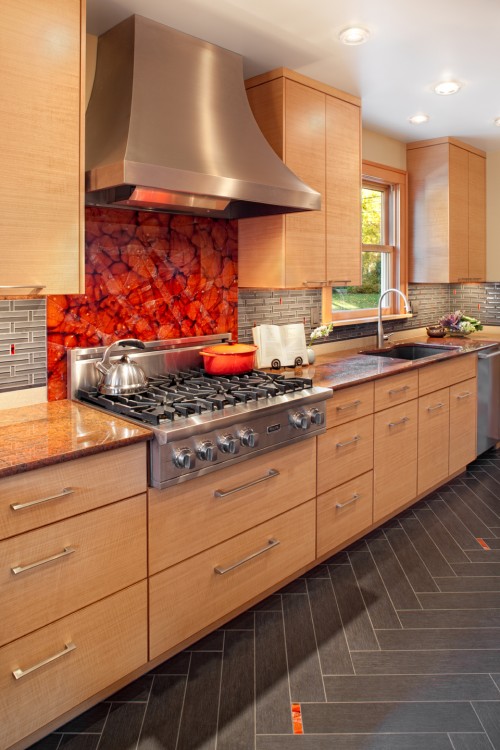
Design Trends in Kitchen Backsplashes
Subway Tiles
Subway tiles are a classic and timeless choice for kitchen backsplashes. Originating from the early 20th-century subway stations, these rectangular tiles have become a staple in kitchen design. Their simplicity, versatility, and clean lines make them a popular choice for both traditional and contemporary kitchens.
The standard size for subway tiles is 3×6 inches, but they are available in various sizes, from mini-subway tiles to larger formats. This range of sizes allows for flexibility in design, accommodating different kitchen styles and preferences. Subway tiles are typically installed in a running bond or offset pattern, but they can also be arranged in herringbone, vertical, or diagonal patterns for a more unique look.
One of the key advantages of subway tiles is their affordability. Made primarily from ceramic or porcelain, they are budget-friendly while still offering a high-quality finish. This makes them an excellent choice for homeowners looking to update their kitchen without breaking the bank.
Subway tiles come in a wide array of colors and finishes, from classic white and neutral tones to bold and vibrant hues. Glossy finishes can add a sleek and modern touch, while matte finishes offer a more understated and sophisticated look. The choice of grout color can also significantly impact the overall design. A contrasting grout color can highlight the pattern and add visual interest, while matching grout creates a seamless and cohesive appearance.
Maintenance is another benefit of subway tiles. Their smooth, non-porous surface makes them easy to clean and resistant to stains and moisture. This is particularly important in a kitchen environment where spills and splashes are common. A simple wipe with a damp cloth is usually sufficient to keep subway tiles looking their best.
The timeless appeal of subway tiles ensures that they remain in style, making them a safe and enduring choice for kitchen backsplashes. Their versatility allows them to complement a variety of design aesthetics, from farmhouse and vintage to modern and minimalist. By incorporating subway tiles into a kitchen backsplash, homeowners can achieve a look that is both stylish and functional.
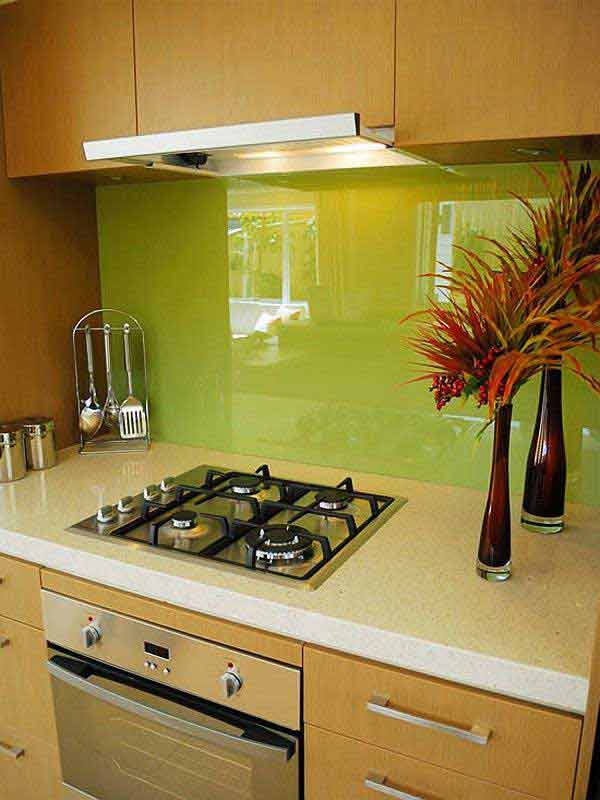
Mosaic Tiles
Mosaic tiles offer a unique and artistic approach to kitchen backsplashes. Composed of small pieces of glass, stone, ceramic, or metal, these tiles are arranged in intricate patterns and designs, creating a visually stunning effect. Mosaic tiles can add color, texture, and personality to a kitchen, making them a popular choice for homeowners looking to make a statement.
One of the main advantages of mosaic tiles is their versatility in design. They are available in a wide range of colors, shapes, and materials, allowing for endless creative possibilities. From classic geometric patterns to elaborate murals and custom designs, mosaic tiles can be tailored to fit any kitchen style and preference.
Glass mosaic tiles are particularly popular for their reflective properties and vibrant colors. They can make a kitchen appear brighter and more spacious, adding a touch of modern elegance. Stone mosaic tiles, on the other hand, offer a more natural and rustic look, with unique variations in color and texture that add depth and character.
Mosaic tiles are often used to create focal points or accent areas within a kitchen. For example, a mosaic tile backsplash behind the stove or sink can serve as a striking centerpiece. They can also be used to create borders, insets, or decorative panels, adding visual interest and detail to the overall design.
In terms of installation, mosaic tiles come mounted on mesh sheets, which makes them easier to handle and install. This allows for greater precision and consistency in the layout. However, the small size and intricate patterns of mosaic tiles can make the installation process more time-consuming and labor-intensive compared to larger tiles. Professional installation is often recommended to achieve the best results.
Maintenance of mosaic tiles depends on the material used. Glass and ceramic mosaics are easy to clean and resistant to stains, while natural stone mosaics may require sealing to protect against moisture and stains. Regular cleaning with mild soap and water is usually sufficient to keep mosaic tiles looking their best.
Mosaic tiles can elevate the overall design of a kitchen, adding a touch of artistry and individuality. Their ability to combine different colors, materials, and patterns makes them a versatile and dynamic choice for backsplashes. By incorporating mosaic tiles, homeowners can create a kitchen that is not only functional but also uniquely beautiful.

Patterned Tiles
Patterned tiles have become increasingly popular in kitchen backsplash design, offering a bold and eye-catching alternative to more traditional tile choices. These tiles feature intricate designs, geometric shapes, and vibrant colors that can transform a kitchen into a work of art. Patterned tiles are ideal for homeowners looking to add personality and flair to their kitchen space.
One of the key benefits of patterned tiles is their ability to serve as a focal point in the kitchen. A well-chosen patterned tile backsplash can draw attention and create a stunning visual impact. Whether used across the entire backsplash or as an accent area, patterned tiles can add a unique and memorable touch to the kitchen design.
Patterned tiles come in a variety of materials, including ceramic, porcelain, and cement. Each material offers different characteristics in terms of durability, maintenance, and appearance. Ceramic and porcelain patterned tiles are popular for their durability and ease of maintenance, while cement tiles offer a more artisanal and handcrafted look.
The designs available in patterned tiles range from classic and vintage motifs to modern and abstract patterns. Moroccan, Mediterranean, and Spanish-inspired designs are particularly popular, featuring intricate and colorful patterns that add a touch of exotic charm. Geometric patterns, such as hexagons, chevrons, and herringbone, offer a more contemporary and minimalist aesthetic.
When incorporating patterned tiles into a kitchen backsplash, it is important to consider the overall color scheme and style of the kitchen. Patterned tiles can be used to complement or contrast with other elements in the kitchen, such as cabinetry, countertops, and flooring. Careful coordination ensures that the patterned tiles enhance the overall design rather than overwhelming it.
Installation of patterned tiles requires precision and attention to detail to ensure that the patterns align correctly. Any misalignment can be noticeable and detract from the overall effect. For this reason, it is often recommended to hire a professional installer who has experience with patterned tiles. Proper planning and layout are essential to achieving a seamless and visually appealing result.
Maintenance of patterned tiles depends on the material. Ceramic and porcelain patterned tiles are generally easy to clean and maintain, while cement tiles may require sealing to protect against stains and moisture. Regular cleaning with mild soap and water is usually sufficient to keep patterned tiles looking their best.
Patterned tiles offer a creative and dynamic option for kitchen backsplashes. Their bold designs and vibrant colors can add a touch of artistry and individuality to the kitchen, creating a space that is both functional and visually captivating. By carefully selecting and incorporating patterned tiles, homeowners can achieve a unique and stylish kitchen design.
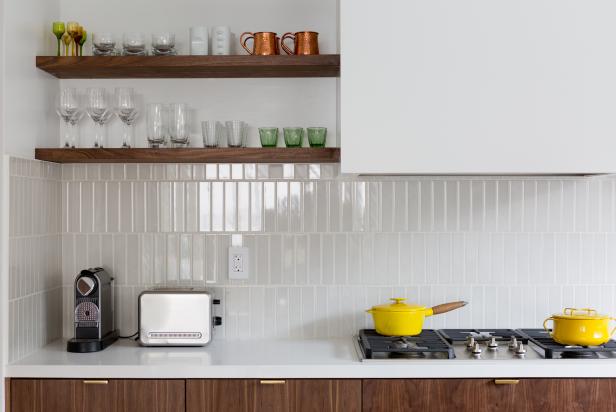
Installation and Maintenance
Preparing for Installation
Proper preparation is key to ensuring a successful and long-lasting backsplash tile installation. Before starting the installation process, it is important to gather all necessary materials and tools, plan the layout, and prepare the surface. Taking these steps will help to avoid common pitfalls and ensure a smooth installation process.
The first step in preparing for installation is to measure the area where the backsplash will be installed. Accurate measurements are essential to determine the amount of tile needed and to plan the layout. It is recommended to purchase an extra 10-15% of tile to account for cuts, waste, and future repairs.
Next, gather all necessary tools and materials. This includes tiles, adhesive, grout, spacers, a tile cutter or wet saw, a notched trowel, a grout float, a level, and safety equipment such as gloves and goggles. Having all materials and tools on hand before starting the installation will help to avoid delays and interruptions.
Preparing the surface is a crucial step in the installation process. The wall should be clean, dry, and free of any grease, dust, or debris. Any existing backsplash or wall coverings should be removed, and any holes or imperfections in the wall should be patched and sanded smooth. If the wall is painted, it may be necessary to roughen the surface with sandpaper to ensure proper adhesion of the tiles.
Planning the layout is another important step. Dry-lay the tiles on a flat surface to determine the best arrangement and to see how the tiles will fit within the space. This will help to identify any necessary cuts and to ensure that the pattern or design is centered and symmetrical. Use a level and a straightedge to draw guidelines on the wall, which will serve as a reference during installation.
Applying a primer or a thin layer of adhesive to the wall can help to improve the bond between the tiles and the surface. This step is particularly important for porous surfaces such as drywall or plaster. Allow the primer or adhesive to dry according to the manufacturer’s instructions before proceeding with the installation.
Finally, plan for any necessary electrical work, such as moving or adding outlets and switches. Turn off the power to the kitchen before working on any electrical components. Use outlet extenders or spacers to ensure that the outlets and switches are flush with the surface of the new backsplash tiles. Proper preparation will help to ensure a smooth and successful backsplash tile installation.
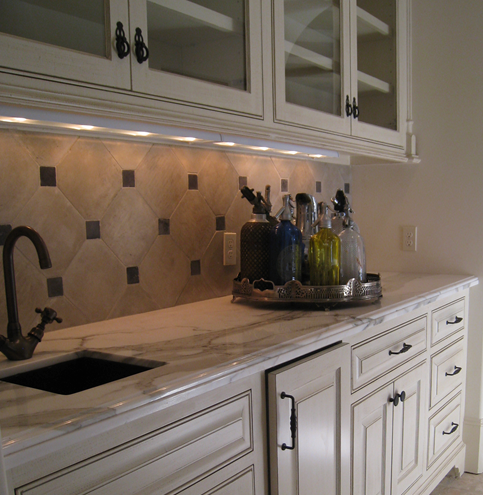
Tile Installation Process
The tile installation process involves several key steps: applying adhesive, setting the tiles, cutting tiles to fit, grouting, and finishing. Each step requires attention to detail and precision to achieve a professional and long-lasting result.
Start by applying the adhesive to the wall using a notched trowel. Spread a small section of adhesive at a time to prevent it from drying out before the tiles are set. Hold the trowel at a 45-degree angle to create even ridges in the adhesive, which will help to ensure a strong bond between the tiles and the wall.
Next, begin setting the tiles in place. Start at the bottom center of the wall and work your way outwards and upwards, using spacers to maintain even gaps between the tiles. Press each tile firmly into the adhesive, twisting slightly to ensure a secure bond. Use a level to check that the tiles are even and straight.
Cutting tiles to fit around edges, corners, and obstacles is an important part of the installation process. Use a tile cutter or wet saw to make precise cuts. Measure and mark the tiles before cutting to ensure an accurate fit. Wear safety goggles and gloves to protect yourself from sharp edges and flying debris.
Once all tiles are set and the adhesive has dried according to the manufacturer’s instructions, it is time to apply the grout. Mix the grout according to the instructions and apply it using a grout float. Spread the grout diagonally across the tiles to fill the gaps, pressing it into the spaces between the tiles. Wipe off excess grout with a damp sponge, being careful not to remove grout from the joints.
Allow the grout to dry for the recommended time before polishing the tiles with a dry cloth to remove any haze. If necessary, apply a grout sealer to protect the grout from stains and moisture. Follow the manufacturer’s instructions for application and drying times.
Finally, install any necessary trim pieces, such as edge tiles or trim strips, to finish the edges of the backsplash. Caulk the edges where the tiles meet the countertop, cabinets, or walls to create a clean and finished look. Allow the caulk to dry completely before using the kitchen.
Proper tile installation requires patience and attention to detail. Taking the time to follow each step carefully will help to ensure a beautiful and long-lasting backsplash.
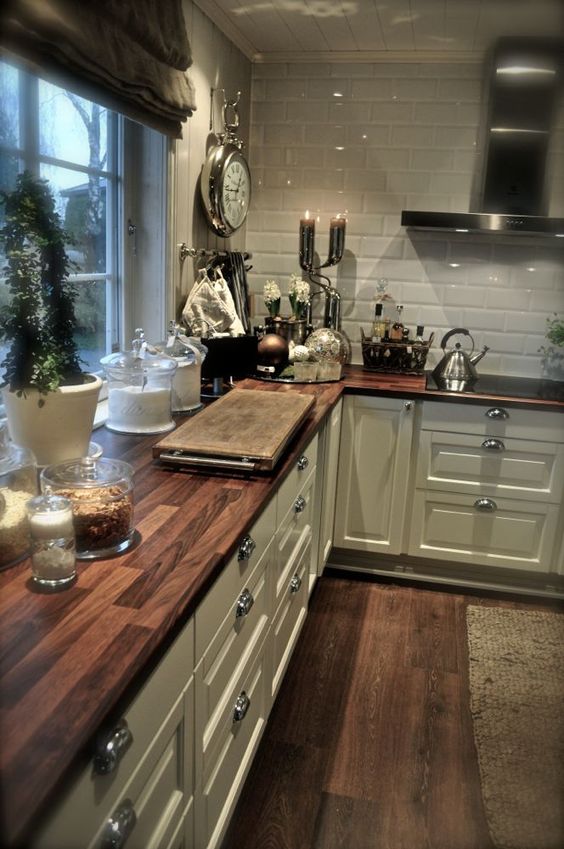
Common Mistakes to Avoid
Overlooking Task Lighting
One of the most common mistakes in kitchen design is overlooking the importance of task lighting, particularly in the backsplash area. Task lighting is essential for providing adequate illumination for cooking, food preparation, and cleaning. Without proper task lighting, even the most beautifully designed backsplash can be rendered ineffective.
Many homeowners focus solely on ambient lighting, such as overhead fixtures or recessed lights, and neglect the need for targeted task lighting. While ambient lighting provides general illumination, it often casts shadows on work surfaces, making it difficult to see clearly. Task lighting, such as under-cabinet lights or pendant lights, provides focused illumination exactly where it is needed.
Under-cabinet lighting is particularly effective for illuminating the backsplash area. These lights are installed on the underside of upper cabinets and direct light downward onto the countertops and backsplash. They help to eliminate shadows and provide bright, even illumination for tasks such as chopping vegetables, reading recipes, and cleaning up spills.
Another option is to install pendant lights above work areas, such as the sink or the kitchen island. Pendant lights can add both style and functionality to the kitchen, providing targeted light for specific tasks. When choosing pendant lights, consider the height and placement to ensure they provide adequate illumination without causing glare or shadows.
LED strip lights are a versatile and energy-efficient option for task lighting. They can be installed under cabinets, along the edges of shelves, or even behind the backsplash for a backlit effect. LED lights are long-lasting and produce minimal heat, making them a safe and practical choice for kitchen lighting.
Proper task lighting not only improves functionality but also enhances the overall aesthetics of the kitchen. A well-lit backsplash can showcase the beauty of the tiles and highlight the design details. Consider installing dimmable lights to adjust the brightness according to different tasks and moods.
Ignoring the importance of task lighting can lead to a poorly lit kitchen, making it difficult to perform everyday tasks efficiently. By incorporating targeted task lighting into the kitchen design, homeowners can create a well-lit and functional space that enhances both the usability and beauty of the kitchen.
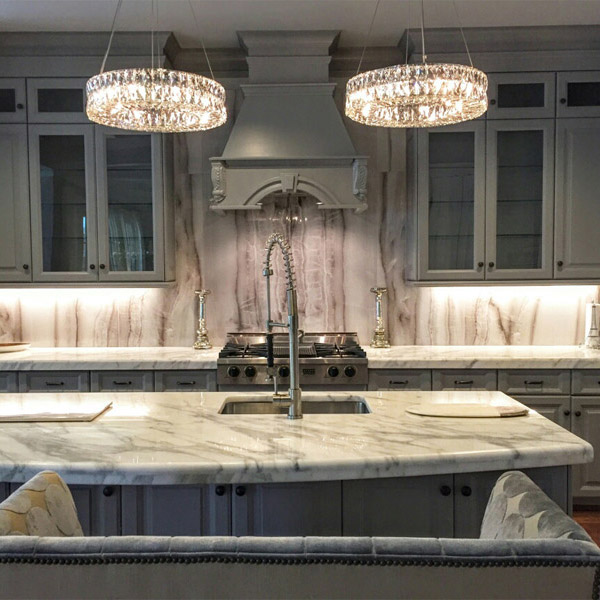
What is the best material for a kitchen backsplash?
The best material for a kitchen backsplash depends on factors such as budget, style preference, and maintenance requirements. Popular choices include ceramic and porcelain tiles, which are durable, affordable, and available in a wide range of colors and patterns. Glass tiles are also a good option for their reflective properties and modern aesthetic. Natural stone tiles, such as marble, granite, and slate, offer a luxurious and unique look but may require more maintenance. Ultimately, the best material is one that fits the homeowner’s needs and design vision.
How do I choose the right color for my kitchen backsplash?
Choosing the right color for a kitchen backsplash involves considering the overall color scheme of the kitchen. The backsplash can either complement the existing colors or serve as a contrasting focal point. For a cohesive look, choose colors that match or harmonize with the cabinets, countertops, and flooring. For a bold statement, opt for contrasting colors or vibrant patterns. It’s also important to consider the amount of natural light in the kitchen, as lighter colors can make a space feel larger and brighter, while darker colors can add warmth and coziness.
Can I install backsplash tiles myself, or should I hire a professional?
While it is possible to install backsplash tiles yourself, it requires careful planning, precision, and the right tools. DIY installation can save money, but mistakes can be costly and time-consuming to fix. If you are confident in your skills and have experience with tiling, you may be able to complete the project successfully. However, for complex designs, intricate patterns, or high-end materials, it is often best to hire a professional installer to ensure a flawless result.
How do I maintain and clean my kitchen backsplash?
Maintenance and cleaning of a kitchen backsplash depend on the material. Ceramic and porcelain tiles are easy to clean with mild soap and water. Glass tiles are also easy to maintain but may show smudges and fingerprints more easily. Natural stone tiles require regular sealing to protect against stains and moisture. Use a pH-neutral cleaner specifically designed for natural stone to avoid damaging the surface. Regularly wipe down the backsplash to remove grease, splashes, and spills. Avoid using abrasive cleaners or scrubbers that can scratch or damage the tiles.
What are some current trends in kitchen backsplash design?
Current trends in kitchen backsplash design include the use of bold and vibrant colors, intricate patterns, and a mix of materials. Patterned tiles, such as Moroccan or geometric designs, are popular for adding visual interest and personality. Glass tiles and mosaic designs are also trending, offering a modern and artistic touch. Eco-friendly materials, such as recycled glass or sustainably sourced natural stone, are gaining popularity as homeowners become more environmentally conscious. Additionally, minimalist and seamless designs, such as large-format tiles or continuous slabs, are favored for their clean and contemporary look.

Related Posts:
- Led Screen Kitchen Backsplash
- Green Subway Tile Kitchen Backsplash
- Black Glass Kitchen Backsplash
- Penny Backsplash Kitchen
- Ceramic Tile Kitchen Backsplash Designs
- Art3d Peel And Stick Kitchen Backsplash
- Popular Backsplashes In Kitchen Design
- White Kitchen Black Backsplash
- White Kitchen With Mosaic Backsplash
- Contemporary Kitchen Backsplash Ideas Pictures